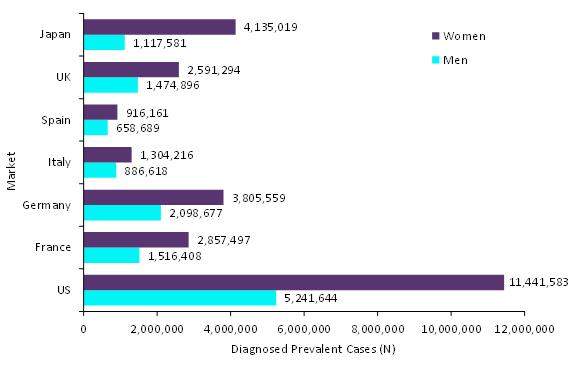Dry eye syndrome (DES), also known as keratoconjunctivitis sicca, is a multi-factorial disease of the eye caused by dryness, decreased tear production, or increased tear film evaporation. It results in symptoms of discomfort such as visual disturbance and tear film instability. The highly prevalent nature of this disease and the loss of quality of life associated with it make it an important health concern. Risk factors for developing this disease include increased age, environmental exposure to irritants, and—one of the most important—sex.
Figure 1 below presents the diagnosed prevalent cases of DES estimated by GlobalData epidemiologists for 2016 in the seven major markets (7MM: US, France, Germany, Italy, Spain, UK, and Japan). In each market, women make up the majority of the diagnosed prevalent cases of DES. In the US, this trend is especially prominent, with 11.4 million cases in women compared with 5.2 million cases in men.
Numerous epidemiology studies in various populations around the world have found that DES is more common in women, though the degree of skew toward women varies by the population studied. The skew is particularly pronounced in postmenopausal women. Sex hormones are known to play a significant role in ocular surface homeostasis, and studies are investigating the mechanisms by which disturbances may result in dry eye syndrome. Anti-androgen therapy, Sjögren’s syndrome, and premature ovarian failure also may increase the risk for DES, as these conditions are associated with androgen deficiency. Treatment and disease prevention could potentially target older women as a significant population for therapeutics development.





